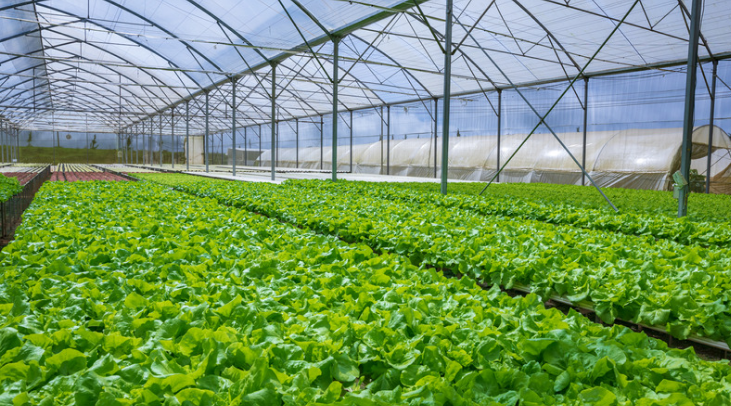In later a long time, hydroponics has captured the consideration of nursery workers, supportability devotees, and rural trend-setters alike. With its potential to revolutionize nourishment generation, hydroponics offers a soil-free, water-efficient strategy of developing plants, empowering anyone—from domestic cultivators to commercial growers—to develop crops in restricted spaces and challenging situations. Here’s everything you would like to know to induce started with hydroponics!
What is Hydroponics?
Hydroponics may be a strategy of developing plants without soil. Rather than conventional soil, plants are developed in a nutrient-rich water arrangement that gives the vital minerals for development. This strategy permits roots to specifically retain supplements from the water, frequently driving to speedier development rates and bigger yields.
Why Select Hydroponics?
1. Space Productivity:Hydroponic frameworks are frequently vertical or compact, making them perfect for urban situations or zones with restricted arrive.
2. Water Preservation:Hydroponics employments up to 90% less water than conventional soil planting, as water can be recycled and reused.
3. Speedier Development:With coordinate get to to supplements, plants frequently develop 30–50ster than in soil.
4. Year-Round Developing:Since hydroponic frameworks are ordinarily inside or in controlled situations, they permit for year-round development.
5. Pesticide Diminishment:The controlled environment diminishes the hazard of bugs, minimizing the require for hurtful pesticides.
Basic Components of a Hydroponic System
To start your hydroponic travel, you’ll require a few fundamental components:
1. Growing Medium:In spite of the fact that there’s no soil, hydroponics still requires a medium to bolster the plant’s roots. Well known choices incorporate rockwool, coconut coir, and clay pellets.
2. Supplement Arrangement:Typically the life source for your plants, giving all fundamental minerals. Supplement blends for hydroponics are promptly accessible and cater to diverse sorts of plants.
3. Water:Clean, pH-balanced water is imperative. Tap water can work, but it may require treatment to evacuate abundance chlorine or other debasements.
4. Light:Plants developed inside require satisfactory light to photosynthesize. Driven develop lights are commonly utilized, as they’re energy-efficient and can be customized for distinctive light spectrums.
5. Oxygen Supply:Roots require oxygen to flourish. An discuss pump is regularly utilized to oxygenate the water arrangement, particularly in frameworks where roots are submerged.
6. Framework Structure:Hydroponic frameworks shift in structure and can be as simple or complex as you favor. Common sorts incorporate supplement film procedure (NFT), profound water culture (DWC), and ebb and stream.
Sorts of Hydroponic Frameworks for Tenderfoots
1. Profound Water Culture (DWC):This is often one of the best frameworks. Plants are put in a coasting medium over a supplement arrangement, with an discuss pump to oxygenate the roots.
2. Supplement Film Strategy (NFT):A lean film of supplement arrangement always streams over the roots, perfect for verdant greens.
3. Recede and Stream (Surge and Drain):The framework surges the roots with supplement arrangement intermittently and after that channels, giving plants both oxygen and supplements.
4. Wick Framework:The foremost detached framework, where a wick retains supplement arrangement from a store to nourish the roots. It’s extraordinary for little plants but less viable for large-scale development.
Getting Begun with Hydroponics
1. Select Your Plants:Hydroponics works best for verdant greens like lettuce, herbs (basil, mint), strawberries, and indeed tomatoes. As a fledgling, begin with easy-to-grow plants and move to more challenging ones as you pick up certainty.
2. Set Up Your Framework:Choose on the framework sort based on your objectives, space, and budget. Kits are available, but DIY systems are moreover simple to amass.
3. Screen Supplements and pH:Utilize a pH meter to keep the water pH between 5.5–6.5, perfect for most hydroponic plants. Routinely check and alter supplement levels to guarantee ideal development.
4. Give Satisfactory Light:In the event that characteristic daylight is restricted, utilize develop lights. LEDs are best due to their moo warm yield and energy efficiency.
5. Keep Your Environment Clean:Anticipate green growth buildup and shape by cleaning stores, pumps, and all components routinely.
Tips for Victory
1. Begin Little:Start with a little setup and extend as you ended up more comfortable.
2. Remain Steady:Frequently check your framework, water levels, and supplement concentrations.
3. Learn and Explore:Each plant sort may react in an unexpected way, so do not be anxious to alter and test what works best.
4. Tolerance is Key:Whereas plants may develop quicker in hydroponics, you’ll still need to permit time for the framework to stabilize and flourish.
Hydroponics offers a phenomenal, feasible way to develop nourishment and plants without the require for conventional cultivating space. Whether you’re an flat tenant envisioning of new herbs or an trying agrarian business person, this imaginative developing strategy gives openings to create new, pesticide-free nourishment all year long. As you investigate hydroponics, keep in mind that learning through encounter is portion of the travel. Cheerful developing!

